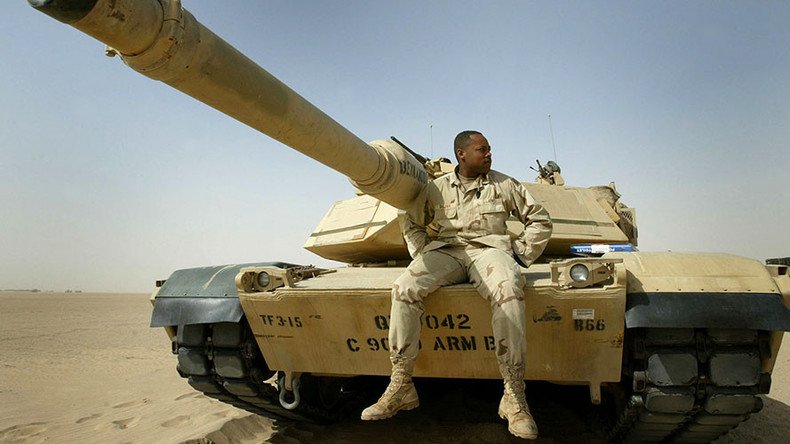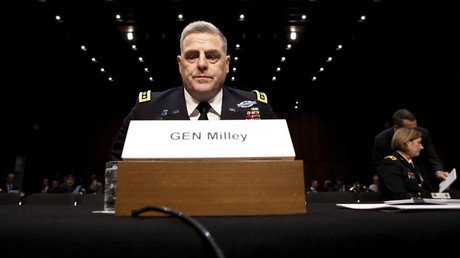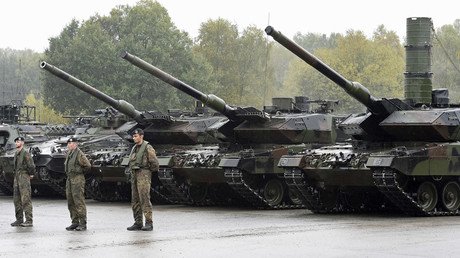US military unable to win major wars, Trump-affiliated think tank warns

All branches of the US military – Army, Navy, Air Force, and Marine Corps – have shrunk so much that they are now incapable of winning two regional wars at once, a report from an influential think tank that helped shape Donald Trump’s defense views says.
The Heritage Foundation, an influential Republican think-tank, says that none of the branches of the US armed forces is strong enough to deal with threats to Washington’s interests, whether actual or perceived, coming from around the world.
A new report entitled ‘2017 Index US Military Strength’ assesses the Army, Navy, Air Force, and Marine Corps, giving them a collective grade of “marginal” for total capability, checked against a top score of “very strong.” The Army, the backbone of the US military, has been branded “weak.”
The Army’s active “end strength” has dropped from 566,000 troops in 2011, and is projected to stand at 450,000 troops by 2018, while the number of 4,500-strong Brigade Combat Teams (BCTs) has fallen from 45 to 31. Only 13 of those 31 BCTs are considered fully combat-ready, and nine are currently involved in ongoing operations, leaving only three to deal with emerging contingencies, the Heritage report said.
Another principal branch of the US military, the Navy, is said to be short of the number of ships needed to project power abroad. The US Navy, which now has the largest aircraft carrier fleet in the world, has 274 combat-ready vessels, while the think-tank believes it needs 346 to be considered at full capacity.
“Without significant funding increases in procuring more vessels across ship types each year, it appears unlikely that the Navy will reach its own capacity goals for the foreseeable future,” the index says.
The Heritage index is based on measuring the US military’s ability to confront and defeat two major adversaries at the same time. In 2014, the Obama administration downgraded that criteria, saying the Pentagon must be capable of defeating a regional adversary in a large-scale conflict, while inflicting unacceptable damages to a second aggressor in a separate theater.
It also listed the US’ primary adversaries, ranking them on a five-point scale for aggressiveness (from “hostile” to “benign”) and military strength (from “formidable” to “marginal”). Notably, Russia, China, and Iran were labeled “aggressive” (four out of five on the aggression scale), while Russia’s capabilities were assessed as “formidable” (five out of five). All of the countries mentioned in the list were said to pose “high” threats to the US’ “vital interests.”
“Russia and China continue to be the most worrisome, both because of the investments they are making in the modernization and expansion of their offensive military capabilities and because of the more enduring effect they are having within their respective regions,” the Heritage index asserted.
The report is very much in line with previous remarks made by top US military brass, who repeatedly claim that the country’s readiness for a “great power war” has been depleted. In the European theater, NATO officials argue the bloc is no match for an “assertive” Russia.
Russian, as well as Western, experts and military officials believe that those statements have more to do with trying to increase the size of the US’ military budget than countering threats. According to the National Priorities project, the US military budget makes up 37 percent of the world’s military spending.
The Heritage Foundation is believed to have heavy influence on people in President-elect Donald Trump’s administration, according to the Wall Street Journal. The think-tank reportedly has dozens of current or former staff members involved in the transition, including one of Heritage’s co-founders, Ed Feulner.
According to the Washington Times, Heritage has also provided expertise to the Trump campaign and deployed some of its analysts on the defense transition team.














